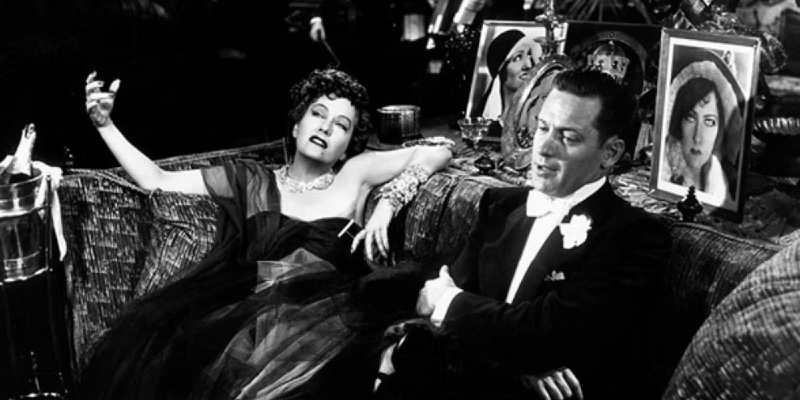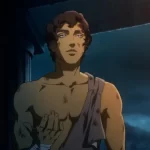Early in my second novel, Return To Blood, one of the main characters discovers the skeletal remains of a murdered woman in the cold black sand dunes of a deserted New Zealand beach. Addison (the young woman who discovers the remains) learns that the bones she discovered belonged to a young woman named Kiri who was the same age as her when she died. Both women, the deceased and the living, are young, headstrong, smart, Māori. Even as Addison’s mother, former detective Hana Westerman, is drawn into the search for who killed Kiri, Addison finds herself likewise drawn into an unlikely relationship with the dead woman, a relationship that crosses the barriers between this mortal world, and the other side.

Matakite is, broadly, the Māori concept of the connection between the living and those who have passed – for Māori, the veil between the physical world and the metaphysical world isn’t a solid wall, it’s more like a bank of mist. Movement between the two worlds is entirely possible and is entirely usual; those who have passed away can make their way through the veil of mist and come to us in times of need, or vice versa.
I am Māori, of the Te Arawa iwi (tribe), and my family has a strong matakite line. My Uncle Albie was a captain in the 28th Māori Battalion: he was shot in Cassino, Italy, missing presumed dead. After three months a missing person is declared dead, and a tangi (funeral rites) began back home in New Zealand. On the night before the tangi he came in a vision to my Auntie Oha, his wife, telling her he wasn’t dead, and he’d be home in a few months. A message was intercepted soon after that he was indeed alive, and in a German POW camp. He did indeed came home a few months later.
When I was 20 years old I had a dream of my dad. He hugged me, in the dream. This was an unusual dream for me. Dad never really hugged me as an adult – that’s what dads of my generation and the generations after do. Not so much my dad’s era. But in the dream, Dad hugged me. He held me. It was warm and it was good. I woke up a little later to a phone call. Dad had died a half hour earlier. While I was dreaming. He had come in that dream, to hug me, a thing he never did, and to say goodbye.
For Māori, none of this is supernatural, ooky-spooky, or remotely out of the ordinary. It’s how the world is. Those who have passed come to us when they are needed, when we (or they) are lonely, when they have something important to pass on.
The following are a few of my all-time favourite dead characters from crime fiction, film and television, who come back through the misty veil, and who have something to say (usually, quite a lot).

THE TREES (novel) by Percival Everett
This book reads like the most maddening, unsolvable of locked-room crime novels, for a long time. Until it doesn’t. There is a breathtaking moment when we realise, at the heart of this fiction is a very real character: 14-year-old Emmett Till who was lynched in Money, Mississippi in 1955, after he was falsely accused by a young white woman of making salacious comments towards her. The murders happening today are vengeance, the lynched dead rising up and returning to put right the things that history failed to, by killing the descendants of the original lynch mobs who literally got away with murder. As one character says: “Less than 1 percent of lynchers were ever convicted of a crime. Only a fraction of those ever served a sentence.” In this comic-horror metaphor for the historic and ongoing brutality of the African-American experience, the Dead are coming back to say: “Time to pay up”.

THE SIXTH SENSE (feature film) written and directed by M. Night Shyamalan
“I see dead people” is one of the most iconic lines of dialogue from the 1990s or maybe any movie epoch. And it’s no spoiler alert (as surely everyone on earth including the living and the dead knows) to say that Bruce Willis doesn’t just pop in from the other side now and then in this movie. M Night Shyamalan’s lightning bolt of genius was to structure an entire 107-minute movie around a lead character who is dead but just doesn’t know it.

THE LOVELY BONES (novel) by Alice Sebold
“My name was Salmon, like the fish; first name, Susie. I was fourteen when I was murdered on December 6, 1973.” Such a sledgehammer of an opening, and so elegantly wielded. A wonderful idea that maybe doesn’t quite go the distance, but that works most beautifully in the understated matter-of-fact narration of the 14 year-old dead Susie. A melancholy crime story where the perp gets collared not by the cops, but by an icicle.

EDGE OF DARKNESS (TV series) written by Troy Kennedy Martin
This benchmark 1985 BBC series may not quite have stood the test of time in terms of visual storytelling, if you did it the disservice of putting it up against pretty much anything from the big-walleted streamers today. But it’s on pretty much every knowledgeable list of the best TV shows of all time, with good reason. An extraordinarily layered political thriller, a decades-before-its-time environmental scream to please wake up before it’s too late. But most of all, this show is a heart-breaking and profound depiction of parental loss. When the dead daughter (played by Joanne Whalley) turns up to on a busy street to have a chat with her grieving dad, it’s quite brilliantly underplayed – like she’s just popped back from buying a pint of milk, rather than from the dead – making the moment completely unforgettable.

BEFORE YOU KNEW MY NAME (novel) by Jacqueline Bublitz
A young woman’s beaten and strangled body is found by the Hudson River. Another New York tragedy, splashed across newspapers momentarily, before everyone else moves on. Almost everyone. In this blockbuster debut, the Australian woman who found the murder victim is driven to learn everything she can about ‘Jane Doe’, while the ghostly Jane Doe herself watches on as her identity becomes consumed into the daily routines of those who deal with the dead. Rich characterisation of female lives, fears, and desires, a crime story where it is the cops who are just bit players.

TUPAC: RESURRECTION (documentary feature film) directed by Lauren Lazan
Tupac narrates his own life, career – and even his own murder – using ingeniously excavated and repurposed audio recordings of the man himself. We see his bullet-riddled limo surrounded by crime scene tape in the middle of a Las Vegas street Las Vegas Street, while Tupac asks – “Who shot me? Shit, I dunno”. It sounds exploitative and creepy. 78% on Rotten Tomatoes and an Oscar nomination say otherwise. In a so-wrong-it-feels-right twist, this documentary is pointed to by many true believers as unimpeachable proof that Tupac is actually still alive.

THE QUAKER (novel) by Liam McIlvanney
Eagle-eyed readers will notice a few New Zealand connections in this list. Bublitz is a Kiwi author, Edge Of Darkness was directed by Kiwi Martin Campbell, The Lovely Bones was adapted by Peter Jackson. Maybe people from this end of the planet feel at ease with the idea of dead people hanging around. Here’s another NZ connection – McIlvanney grew up in Glasgow but now lives in New Zealand. This is a fictionalised retelling of crimes that haunt Scottish consciousness in the same way the Boston Strangler or Zodiac killings haunt US readers. In late 1960s Glasgow, ‘Bible John’ murders three women after nights out at a dance hall. He’s never caught. McIlvanney uses the real case as a springboard for his award-winning novel, but gives each of the victims – all dead at the start of the novel – a strong voice throughout the story.
We get to know them and feel for them, making their loss deep and impactful, not just a way to kickstart a whodunnit.

SUNSET BOULEVARD (feature film) co-written and directed by Billy Wilder
You knew this was coming. An incredibly shot and framed opening scene of a man floating face down in a Hollywood swimming pool. The narrator promises to reveal to the audience what lead to this moment, and the film ends in the same place, with us realising that the narrator knows this story so well because (of course) the guy in the pool is him it’s him in the pool.
***













More Stories
6 Crime and Horror Books Featuring Unusual Narrators
The Ending Of ‘Presumed Innocent’ Gives Carolyn Polhemus A New Killer
Book Release: Night Work by Pete Duval